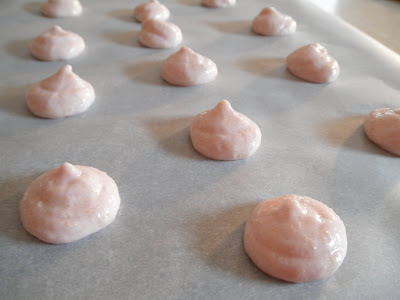Have you had the pleasure? I hadn't, until this past weekend. A trip home brought me back to a cozy, fully-stocked kitchen, a trusty baking partner, and an open afternoon. I'll take it.
We might have made our default chocolate chip cookies had I not still been tinged by the afterglow of my recent coup des croissants. An affinity for recipes of the finicky French kind sprung from that experience, and I was ready for the next challenge. Macarons had, for quite some time, a definite mystique. I knew what they looked like, and I knew what they had to offer: a creamy filling harnessed by two light, airy cookies. I did not know how the exquisite sandwiches came to be, and to be honest, I wasn't entirely sold on such a textural combination. All we could do was follow the recipe, step by step. And so we began.
Did you know that powdered almonds are the "flour" of macarons? Yep. Our recipe called for whole blanched almonds that were to be pulverized in a food processor. We had whole almonds, but not blanched. We had no food processor, but an adorably tiny coffee grinder. Now, take pause here, because this was an incredible breakthrough for my mom and me. We learned that we could blanch our own almonds by pouring boiling water over them, then waiting a minute before slipping off the seedcoat. (We also learned that we don't need no stinking food processor.) With a spark of ingenuity and mutual enthusiasm, we powdered those almonds.
After that we were running on what I dare describe as la cocaïne de le chef Francais: a high only achieved by the knowledge that you've done more than purchase and combine ingredients - that you have, in fact, made your ingredients!
All right, I've had my say. Now feast your eyes on the rest of this confectionary venture, because it's just as beautiful and fascinating as the onset.
With macarons now demystified, I can attest to the gustatory trip these petit sandwiches promise. The coalescence of crispy, chewy, and creamy is ethereal, and impossible to meet with your eyes open.




















